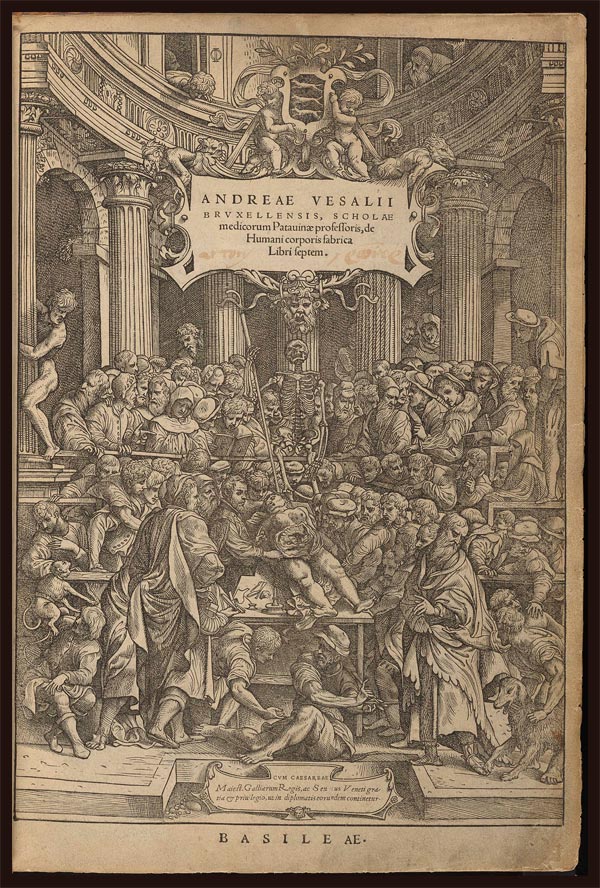Through this comprehensive treatise, Andreas Vesalius offered the most exhaustive description of the structure and workings of the human body ever published, correcting some of the errors in the anatomical teachings of Galen, whose conclusions were in fact based on the dissections of animals. The Fabrica consists of seven books, which are divided into numerous chapters. Book 1 deals with bones and cartilage; Book 2 discusses muscles and ligaments; Books 3 and 4 describe the vascular system and the nerves. Book 5 is devoted to the viscera, including a study of fetuses and the uterus; in Book 6 there are depictions of the heart, lungs, diaphragm, trachea, and glands of the throat; and, finally, Book 7 examines the brain, including the different stages of its dissection.
The Fabrica
To zoom in, hover over the image with your mouse
De humani corporis fabrica libri septem Basel: Johannes Oporinus, 1543 The Lewis Stephen Pilcher Collection


